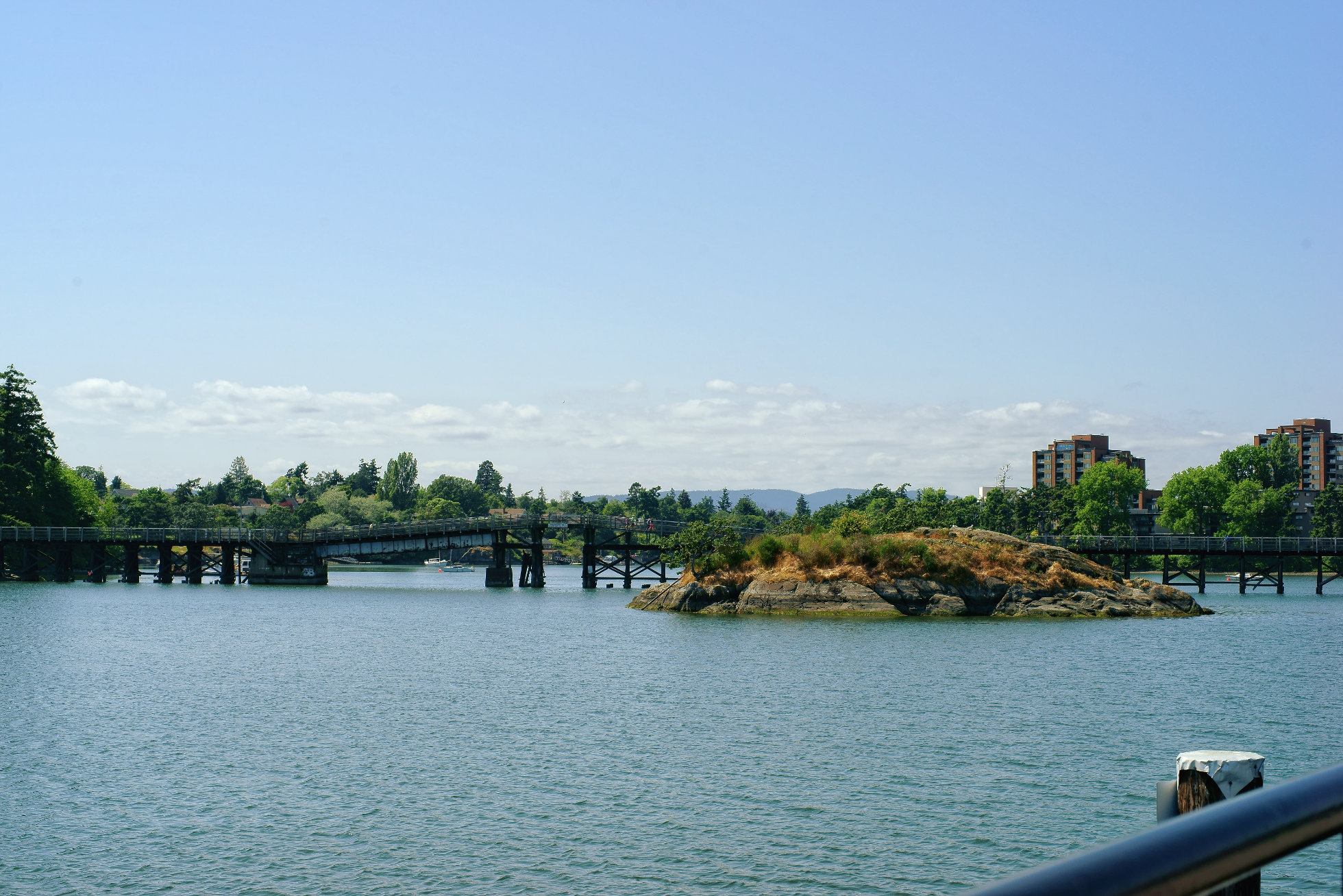In 1850, the "Island of the Dead" contained subsurface burials, but was mostly covered with small sheds, burial boxes and canoes containing human remains. The deceased were often placed in a fetal position and wrapped in a cedar bark mat. Adults were placed in a European-made, metal trimmed trunk and children were often placed in wooden cracker boxes.
Life sized carved wooden memorial figures representing prominent individuals were a common feature of burial locations.
The Lekwungen people, from the old Songhees reserve across the water, came to the island at twilight for feeding of the dead ceremonies. Sticks with chunks of sap were thrown into a fire to keep it blazing until midnight. Ritual words and chanting proceeded, as food to feed the dead was thrown into the fire.
Burials were no longer placed here after 1867, when a fire set by three Victoria boys got out of control and burned off the island. The boys' parents were heavily fined under the Indian Graves Protection Act. The island was taken away from the Songhees in 1924 by a Federal Indian Reserve Commission, but was restored to them by court order in 1993.
Joseph Pemberton, Victoria's most prolific early map maker, gave the name Halkett to the island in 1851. The Halketts were a well known, prominent British Navy family at the time.
(From a plaque placed on the shoreline near Halkett Island by the City of Victoria)




3 comments:
A pretty little island. I wonder if the old tradition was more widespread across the continent among First Nations peoples.
I wish the original First Nations (or Native American) names would be restored to places though. Did this island have a First Nations name before it was called Halkett? For example, Mt. Rainier should go back to being Takhoma. I'm pretty sure I saw this on the harbour ferry tour. That info sounds really familiar.
@William: I suspect small islands were often chosen for above ground burials because they would not have been bothered by dogs, wolves or other scavengers. In other parts of the continent I know that bodies were sometimes interred on platforms up in trees for the same reason.
@JoJo: I agree that's it's a good idea to revert to the original First Nations place-names and it is happening in this area though not in any organized or comprehensive fashion. Probably the most recent was the move to change Mount Douglas to its original name of Pkols. I read up on Halkett Island a bit before I made this post but was unable to find any reference to its original name.
Post a Comment